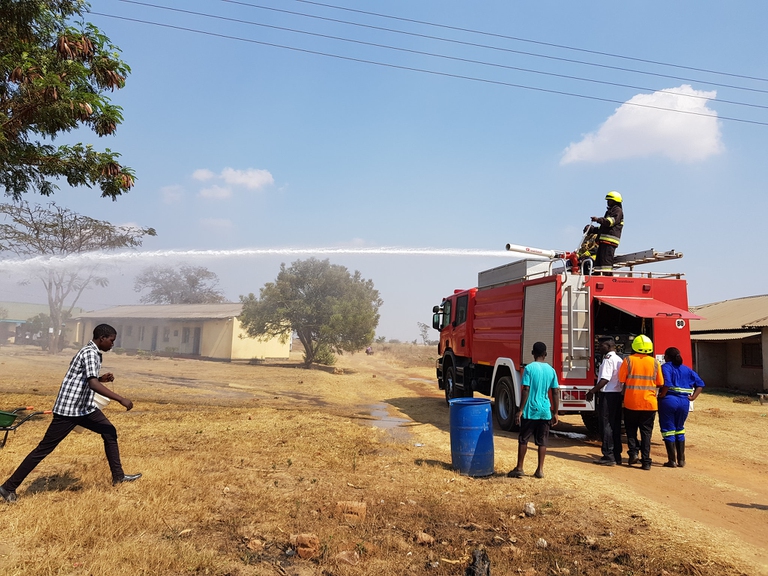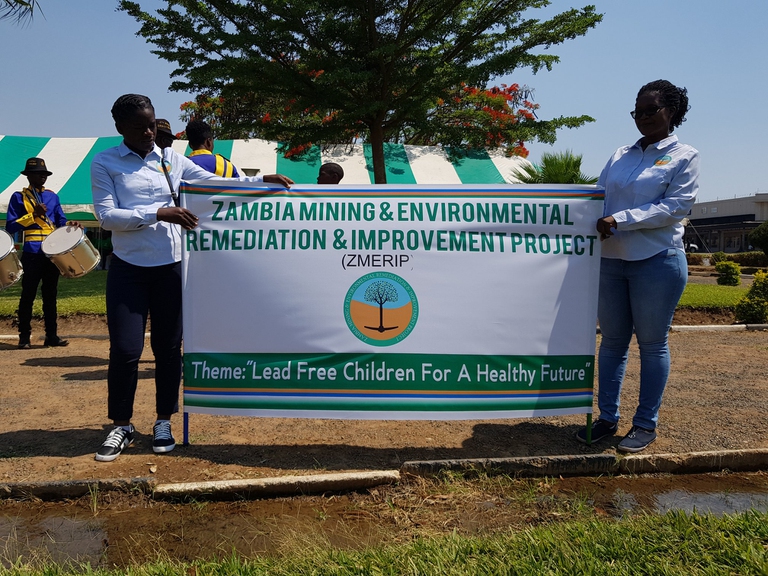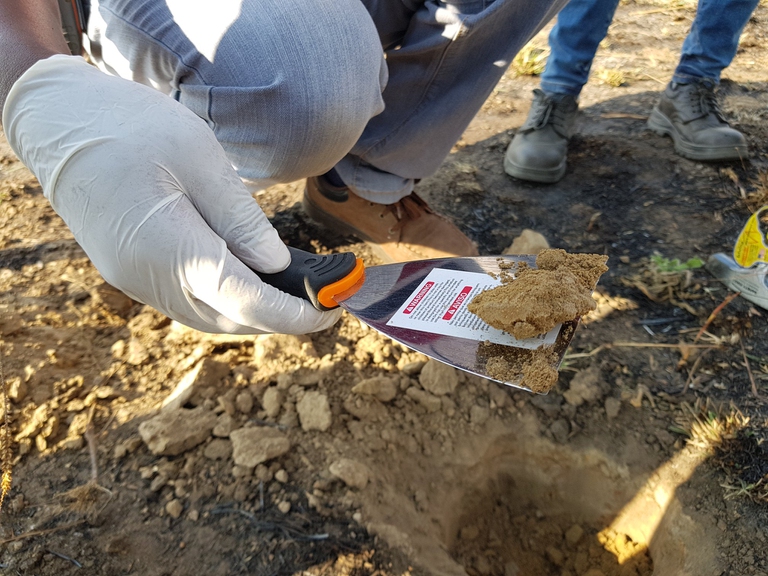
South African court dismisses a major lawsuit by 140,000 Zambian women and children against Anglo American for Kabwe lead poisoning. A setback for affected communities enduring the lasting impact of lead contamination.
Anglo American is accused of poisoning thousands, especially children, after decades of lead mining in Kabwe. A lawsuit has been filed to seek justice.
A group of Zambian women and children have sued the mining firm Anglo American plc for allegedly causing widespread toxic lead pollution affecting more than 100,000 people, including children and women of childbearing age. The contamination was caused by the operations of a lead mine closed over twenty years ago in Kabwe, 140 kilometres away from the Zambian capital of Lusaka, according to the lawsuit filed in the Johannesburg High Court in South Africa.
The plaintiffs are demanding compensation and a clean-up operation, as they contend that Anglo American played a key role in controlling, managing, supervising and advising on technical, medical and safety aspects of the mine’s operations and the deficiencies that led to heavy pollution of the local environment and communities.
“The main sources of this poisonous lead were from the smelter, ore processing and tailings dumps,” according to the lawsuit. “Anglo knew, or ought reasonably to have known of the risks of lead pollution from the mine and the measures that were required to prevent and address this pollution,” read the legal papers filed by law firms Leigh Day and Mbuyisa Attorneys on behalf of 13 plaintiffs representing around 100,000 people.
In response, Anglo American – previously based in both Johannesburg and now in London, UK – has refused to be drawn into further debate concerning its environmental liabilities. “We’re concerned to learn of the situation in Kabwe, but we’ll strongly defend our position in court,” the company stated. It also insisted that it was among several investors that owned the mine and that it was never the majority owner.
“In the early 1970s, the company that owned the mine was nationalised by the Zambian government and for more than twenty years thereafter the mine was operated by Zambia Consolidated Copper Mines Limited (ZCCM), a state-owned body, until its subsequent closure in 1994. That is the more reason why we’re not in a position to comment further about the matter, but we certainly don’t believe that Anglo American is in any way responsible for the current widespread lead situation,” the mining giant added.
Experts contradict this contention, saying that the issue doesn’t relate to current environmental liabilities but to those of the mine in question, which operated for more than 77 years, causing protracted environmental damage felt to this day, and raked in billions of dollars for the company.
For nearly a century, when Zambia was under British colonial rule, lead deposits were mined in Kabwe, formally known as Broken Hill. In 1904, The Rhodesian Broken Hill Development Company, registered in London, begun operating the Kabwe lead mine. By 1927, Anglo American had obtained full control of it.
After the company shut down operations, Kabwe experienced severe economic shock coupled with mass job losses and limited economic opportunities. This situation forced the Zambian government to transfer the mine to ZCCM in 1974. But after thirteen years, the state body closed the mine again, claiming that operations were no longer profitable.
As a result of decades of mining, in most housing areas the tolerable soil lead levels of 400 parts per million (ppm) were surpassed. “Levels of lead in children’s blood were above the safety limit of 5 microgrammes per decilitre of blood,” according to an analysis carried out by the World Bank in 2016. “The vast majority were over 45 microgrammes per decilitre, which causes brain, liver and hearing damage, and eight were over 150 microgrammes per decilitre, at which point death is the likely outcome,” the report notes. It concludes that “children especially infants were the worst victims due to the fact that they have the tendency to swallow the most; when they start to play outside with soil and frequently put their hands in their mouths”.
Minerals Yearbook, an annual publication by the United States Geological Survey, reports that “during 78 years of Anglo American’s lifespan of operations in Kabwe, the mine produced in excess of 800,000 tonnes of lead and 1.8 million tonnes of zinc. In the year 1964, lead fetched an average price of 118 pounds (over 150 US dollars, ed.) per tonne on the London Metal Exchange, where Zambia’s mineral exports are sold”. This means that Anglo American made billions of dollars from the mine.
Jubilee Metals Group is the new firm that has taken control of zinc, lead and vanadium operations in Kabwe town. The company is reported to have started preparing to reprocess large historic tailings, i.e. metal residues, in the town. “Going back to the era in which those tailings were first deposited, it wasn’t done in the most environmentally-friendly manner,” according to Gareth Owen, a business development manager at Jubilee Metals Group. “They were scattered in a large area around Kabwe and not built to contain what was inside those tailings”.
In 2002, The Zambian government borrowed 50 million dollars from the World Bank for the creation of the Copperbelt Environment Project, with the aim of cleaning up the environmental impacts in the wake of the protracted pollution. However, this attempt was unsuccessful due to excessively rigid bureaucratic procedures within the government. Local non-profit organisation Citizens for Better Environment also revealed that in 2009, Anglo American agreed to pay 28 million US dollars to clean-up lead pollution in Kabwe town, but failed to honour the agreement.
The aim of the lawsuit is to ensure that the perpetrators take responsibility for decontaminating the pollution and ensuring the people of Kabwe have access to health services as well as a healthy environment. And for justice to finally be obtained.
Siamo anche su WhatsApp. Segui il canale ufficiale LifeGate per restare aggiornata, aggiornato sulle ultime notizie e sulle nostre attività.
![]()
Quest'opera è distribuita con Licenza Creative Commons Attribuzione - Non commerciale - Non opere derivate 4.0 Internazionale.
South African court dismisses a major lawsuit by 140,000 Zambian women and children against Anglo American for Kabwe lead poisoning. A setback for affected communities enduring the lasting impact of lead contamination.
Controversial African land deals by Blue Carbon face skepticism regarding their environmental impact and doubts about the company’s track record, raising concerns about potential divergence from authentic environmental initiatives.
Majuli, the world’s largest river island in Assam State of India is quickly disappearing into the Brahmaputra river due to soil erosion.
Food imported into the EU aren’t subject to the same production standards as European food. The introduction of mirror clauses would ensure reciprocity while also encouraging the agroecological transition.
Sikkim is a hilly State in north-east India. Surrounded by villages that attracts outsiders thanks to its soothing calmness and natural beauty.
Sikkim, one of the smallest states in India has made it mandatory for new mothers to plant saplings and protect them like their children to save environment
Chilekwa Mumba is a Zambian is an environmental activist and community organizer. He is known for having organized a successful lawsuit against UK-based mining companies.
What led to the Fukushima water release, and what are the impacts of one of the most controversial decisions of the post-nuclear disaster clean-up effort?
Nzambi Matee is a Kenyan engineer who produces sustainable low-cost construction materials made of recycled plastic waste with the aim of addressing plastic pollution and affordable housing.










